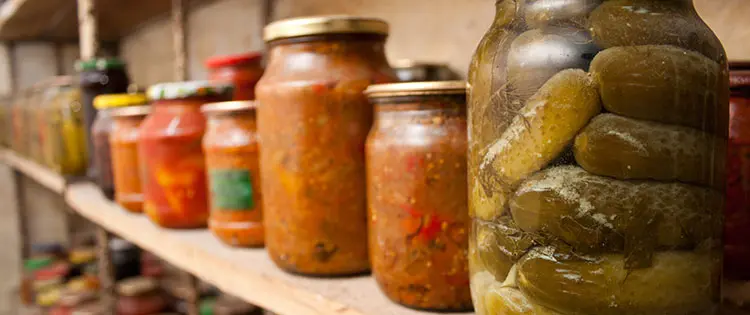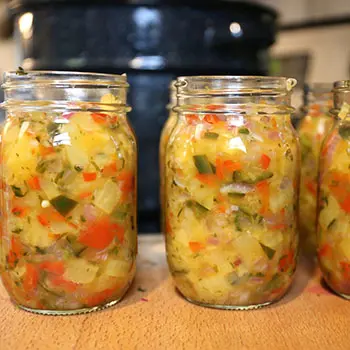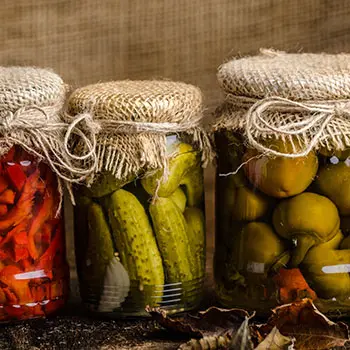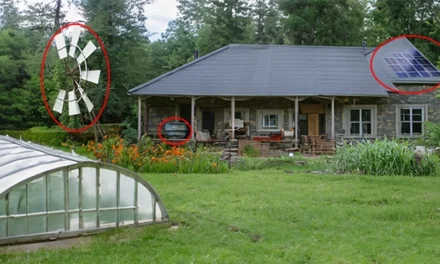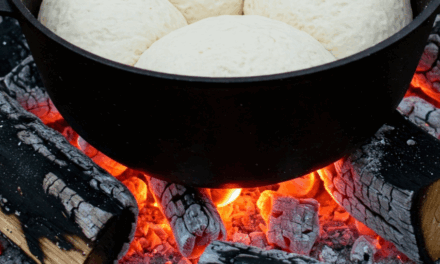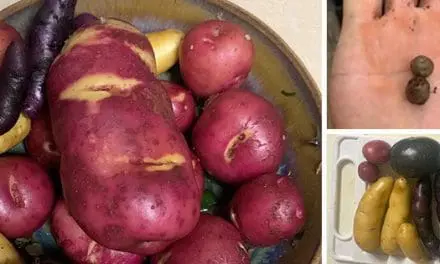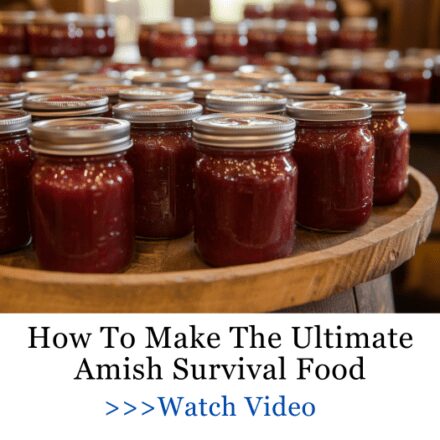People have been canning for generations. Whether it be in true cans or glass jars, once we figured out how to preserve food, we were doing very, very well for ourselves.
Today, we’ll look at a few older types of canning: ones that you may not remember from your childhood or ones that your parents may remember from theirs. Let’s get started.
Jellies and Jams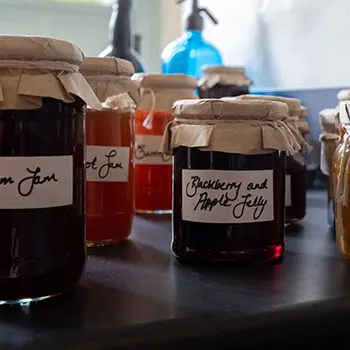
Grandma’s house was always busy during the fall. Why was that? She had plenty of pectin and plenty of fruit to get put into jars and that meant a lot of busy little hands.
Blue-collar-type work was simply more common half a century ago. Today, we’ve mechanized a great deal of it. Back then, they needed one heck of a boost in the morning to get going. What did they start with? A heaping spoonful of pure sugar on their toast or in their oatmeal in the form of jellies, jams, and marmalades.
Related: Canning $5 Amish Stew
While I’m sure that you’re familiar with things like orange marmalade, strawberry jelly, and grape jam, have you considered using your frozen spring berries instead?
Blueberries make wonderful jellies, jams, and chutneys. They were much more popular 40+ years ago, too. Why? With longer, hotter growing seasons, blueberries are something of a hotter commodity than they used to be. However, if you have a bounty of them, they are a wonderful choice.
I also remember gooseberries, which have severely dropped off in popularity. Why? I can’t imagine. These tart, crisp little berries are fantastic when accompanied by eggs and bacon on a chilly fall morning.
Stews and Soups
All of us recognize a Campbell’s can of soup, but did you know that they got backlash for offering something “so easy to make” at a commercial level when they started their business?
While we don’t agree that canning a soup or a stew is the easiest thing on the planet, it does become easier the more you experience it. So give it a try! Our favorites? There are the classic chicken noodles and beef vegetables, but we would love to introduce you to the idea of turkey pot pie stew.
Related: Canning Bone Broth That Lasts For More Than 2 Years
Though usually called turkey stew way back when this has gone on to remind us of pot pie filling! Use your turkey drippings up from Thanksgiving, make a thick gravy, and toss in your favorite veggies with leftover turkey. Thicken it all with the addition of small dumplings and can it according to the instructions on your canner.
Turkey was much more of a common meat 50 or 60 years ago because the hunting seasons were longer (sometimes year ’round in some areas!) and people relied more on hunting, raising their own meat, and visiting the butcher as opposed to being at the whim of the grocery store seasonal idealism.
Turkeys were also simply more common in the wild, though they are still quite easily found in many areas of the country.
At one point, the chicken took over the poultry game. Prior to that, it was grouse, quail, duck, turkey, and, as far as white meats go, even rabbit was common. And if you raise rabbit, it is an excellent substitute for turkey. Just so you know.
Pickles
Though many pickles were a summer trial or placed into cooling sheds until they could get to them, pickle was not always synonymous with cucumber or cabbage. Instead, a wide variety of vegetables, meats, eggs, and even fruits were pickled.
Why did this fall by the wayside? The popularity of pickling died off as the rise of sweeter, tastier foods slowly became the norm. Essentially, sugar replaced tart, sweet, sour, and a wide variety of other flavors we once cherished. Now, we have various levels of sweetness and that’s pretty much it.
The pickles your grandmother would have made would have been tart, crisp, sour, and probably pretty earthy. Many people used types of spices that brought anise or cardamom into the mix, though most of those have left pickle recipes. I strongly recommend bringing them back and giving them a try.
Related: 10 Canning Recipes From The Amish
The biggest question I get about pickles is what people should try pickling. Most of the time, I tell them to try any vegetable or fruit that they would freeze that they may enjoy with vinegar or peppercorns. When I tell them that, I get a curious look, but then they suggest something that is simply brilliant.
The most surprising suggestion I ever got from a first-timer was figs! Pickled figs? I’d never seen them, but they went home and gave it a try. The natural sweet woodiness of figs complements vinegar and salt in a way that I had not expected and I highly recommend giving that a shot if you have a few fig trees around.
Personally, I love to pickle carrots and radishes. They’re wonderful, bright flavors in winter-time salads and I adore them.
Pie Filling
Though you can certainly work from raw fruits or vegetables and put together a pie on your counter, isn’t it easier to tip a can of pie filling directly into your pie plate and know it’s already balanced and ready to go?
Pie filling is easy to make in large batches. Take apple pie filling: peel your apples, cut your apples, cook them down with their spices and sugars, and ladle them into jars or cans (your pick) for long-term storage.
Easy peasy and everyone loves a fresh apple pie. It really cuts down on your time put into them, too, and allows you to prep them last minute (if necessary).
In truth, we do this with many of our berry plants because the precious fruits just don’t last that long. If you’re struggling to get through your berries before they start to go to pieces on you, make pie filling. Or, head back to the top of this page and reconsider jam, jellies, chutneys, marmalades, and all those other delicious spreads.
Whatever you decide to do with your canning, stay safe and always read through your instructions first. And, as always, Happy Canning!
20 Grandma’s Depression Foods We Will Need Soon
How the Amish Can Bread in Mason Jars (Video)
Foods That Are Safe To Preserve In a Water Bath Canner

